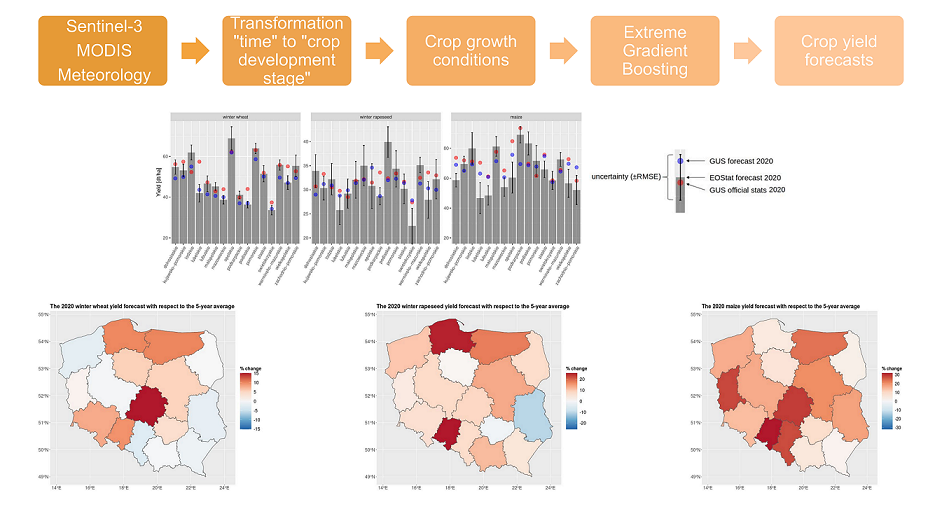Timely crop yield forecasts at national level are substantial to support food policies, to assess agricultural production and to subsidize regions affected by food shortage. This study presents an operational crop yield forecasting system for Poland that employs freely available satellite and agro-meteorological products provided by the Copernicus programme. The crop yield predictors consist of: (1) vegetation condition indicators provided daily by Sentinel-3 OLCI (optical) and SLSTR (thermal) imagery, (2) a backward extension of Sentinel-3 data (before 2018) derived from cross-calibrated MODIS data, (3) air temperature, total precipitation, surface radiation, and soil moisture derived from ERA-5 climate reanalysis generated by the European Centre for Medium-Range Weather Forecasts. The crop yield forecasting algorithm is based on thermal time (growing degree days derived from ERA-5 data) to better follow the crop development stage. The recursive feature elimination is used to derive an optimal set of predictors for each administrative unit, which are ultimately employed by the Extreme Gradient Boosting regressor to forecast yields using official yield statistics as a reference. According to intensive leave-one-year-out cross validation for 2000–2019 period, the relative RMSE for NUTS-2 units are: 8% for winter wheat, and 13% for winter rapeseed and maize. Respectively, for the LAU units it equals 14% for winter wheat, 19% for winter rapeseed, and 27% for maize. The system is designed to be easily applicable in other regions and to be easily adaptable to cloud computing environments (such as DIAS or Amazon AWS), where data sets from the Copernicus programme are directly accessible.

